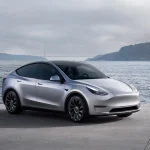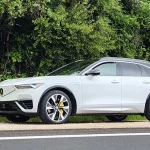
Complex engine tech gets better ratings, does little in real world: reportComplex engine tech gets better ratings, does little in real world: report
Lately, automakers haven’t been touting the rising fuel economy of new vehicles, but it has to continue rising to meet reductions in the legal levels of carbon emitted.
While major strides in fuel economy have been made over the past five years, the complex engine technologies and other improvements turn out to have less effect in real-world driving than the numbers would indicate.
In layman’s terms, a tiny turbocharged inline-4 cylinder engine may not be as efficient as lab results suggest.
DON’T MISS: Fuel-efficiency rules create jobs too, contrary to industry plaints
Those findings come from the latest round of intensive research undertaken by UK-based Emissions Analytics, which has tested more than 500 cars in real-world driving situations in the United States.
Globally, it’s now tested more than 1,000, and the results may be discouraging for many automakers, according to a preview of the research from Automotive News (subscription required).
EA’s real-world testing shows no actual overall improvement to fuel economy and no decrease in CO2 emissions over earlier vehicles of the same size, despite increasing numbers of new technologies and more complex powertrains on new vehicles.
2018 Chevrolet Malibu
EA compiled its data using an 88-mile course in Southern California, where its equipment measured actual tailpipe emissions of carbon dioxide, nitrogen oxides, and other pollutants, along with the actual fuel economy.
Its results suggest three major takeaways.
Engines of less than 2 liters have seen zero changes in fuel economy; that for engines displacing 2 to 3 liters has actually decreased around 8 percent; and only engines larger than 3 liters have increased their fuel economy, about 8 percent.
READ THIS: Bargains surge on small, fuel-efficient sedans, hatchbacks
EA believes the efficiency decrease in the most common engines in the U.S., the 2- to 3-liter units, has to do with longer commute times and the types of vehicles the engines are powering.
The engines may be small and efficient, but they lose those characteristics when drivers cover longer distances in larger, heavier crossover utility vehicles, rather than smaller, lighter compact sedans.
The research also found turbocharged engines are some of the worst offenders in failing to keep their efficiency promises.
2015 Ford Focus SE EcoBoost, Bear Mountain State Park, NY, May 2015
In EPA emission testing in laboratory settings, the engines are under low stress and produce excellent fuel economy figures.
In the real world, when the turbos are actually used frequently to keep up with traffic far more aggressive than the test cycles, the engines actually proved less efficient than a naturally-aspirated engine of the same power.
Some good news arrived on the hybrid front, however: EA found traditional hybrids provided excellent efficiency under real-world driving conditions, and kept CO2 levels low as well.
CHECK OUT: Main Path To Better Fuel Efficiency: Lighter Vehicles, Say Automakers
Automakers that have reduced the weight of their vehicles, employed more gears in their automatic transmissions, and used higher-efficiency tires also scored well in EA’s real-world fuel economy tests.
The full report is due to be released in October of this year, and the company will provide more specifics on which technologies prove to help improve efficiency.
It will also highlight those technologies, likely include many turbocharger applications, that consumers should avoid because they provide higher EPA fuel-economy ratings but can’t deliver on them in actual use.
_______________________________________
Follow GreenCarReports on Facebook and Twitter
View original article at: “https://www.greencarreports.com//news/1112657_complex-engine-tech-gets-better-ratings-does-little-in-real-world-report”
Add a comment Cancel reply
Comments (0)
Stimulants Smokeyschemsite
… [Trackback]
[…] Read More Information here to that Topic: autoseu.com/complex-engine-tech-gets-better-ratings-does-little-in-real-world-reportcomplex-engine-tech-gets-better-ratings-does-little-in-real-world-report/ […]
Fryd
… [Trackback]
[…] Here you can find 94880 more Info on that Topic: autoseu.com/complex-engine-tech-gets-better-ratings-does-little-in-real-world-reportcomplex-engine-tech-gets-better-ratings-does-little-in-real-world-report/ […]
Categories
- Activism (1)
- Adventure (1)
- Advertising (2)
- Agriculture (1)
- Air pollution (4)
- Air transport (3)
- aluminium (2)
- Amazon (3)
- Animals (1)
- Apple (2)
- Architecture (1)
- Arctic (1)
- Artificial intelligence (1)
- Augmented Reality (1)
- Auto Detailing (1)
- autopilot (1)
- battery (31)
- Best summer holiday destinations 2022 (1)
- Bicycle (1)
- biodiversity (1)
- BMW (2)
- boat (1)
- Bus (1)
- Business (4)
- Buying Guides (1)
- car (7)
- Car industry (18)
- Car News (18)
- car rental (3)
- Car Reviews (4)
- Car sales (6)
- carbon emissions (15)
- carbon footprint (3)
- Carlos Ghosn (1)
- Cars (66)
- Central Europe (1)
- CES (2)
- charging station (11)
- Children (1)
- China (12)
- Citroën (1)
- city (1)
- City transport network (2)
- clean energy (2)
- Climate (1)
- climate change (9)
- Climate crisis (4)
- Climate emergency (2)
- climate protection (2)
- CO2 emissions (39)
- Company (3)
- Competition (1)
- Conscious travel (2)
- Contamination of water (1)
- Copper (2)
- cost of living (2)
- Cuba (1)
- Cuban politics (1)
- Cybertruck (1)
- Cycling (1)
- deforestation (1)
- delivery (3)
- Denmark (2)
- Detroit (1)
- Diesel (4)
- Diesel car (7)
- e-mobility (11)
- e-scooter (2)
- Eco travel (3)
- Eco-friendly (2)
- Ecology (1)
- Economy (1)
- El Niño (1)
- Electric (11,302)
- Electric boats (1)
- electric car (107)
- Electric Cars (499)
- Electricity (5)
- Electricity consumption (3)
- Electricity market (5)
- Elon Musk (21)
- emission (1)
- Emmanuel Macron (1)
- Energy (2)
- Energy low cost (1)
- energy transition (6)
- Entrepreneur (1)
- Environment (5)
- Environment pollution (1)
- Environmental protection (4)
- EU Policy (1)
- EU-China (2)
- Europe (7)
- Europe's energy crisis (1)
- European Commission (3)
- European economy (2)
- European Union (18)
- Euroviews (6)
- Eviction (1)
- EVs (37)
- F1 (1)
- factory (4)
- fake news (1)
- family (2)
- Ferrari (1)
- fertilizer (1)
- fine (penalty) (1)
- fire station service (1)
- flight (1)
- Flying car (4)
- Food security (1)
- Ford (1)
- Formula 1 (2)
- Fossil fuels (14)
- France (39)
- free trade (1)
- Fuel (3)
- Fuel cell electric vehicles FCEV (10)
- fuel crisis (2)
- Fuel Efficiency (3)
- fuel prices (1)
- Funeral (1)
- Gas (1)
- Gas Prices (1)
- gasoline price hike (1)
- German (1)
- Germany (8)
- Giorgia Meloni (1)
- Global warming and climate change (1)
- Good News (1)
- Greece (1)
- green energy (1)
- green new deal (1)
- Green transportation (17)
- Green Week (1)
- greenhouse gas emissions (6)
- Hanoi (19)
- Health (1)
- home (2)
- homelessness (1)
- Housing market (19)
- human rights abuse (1)
- Hybrid (2,283)
- Hybrids (116)
- Hydrogen (2)
- hydrogen vehicle (2)
- IAA Mobility (2)
- Iceland (3)
- incident (1)
- income (1)
- India (2)
- Indonesia (1)
- infrastructure (1)
- innovation (1)
- International relations (1)
- Investment (4)
- iPhone (1)
- Japan (1)
- Jobs (3)
- Joe Biden (4)
- Jubilee (1)
- Lampedusa (1)
- Las Vegas (1)
- lead petrol (2)
- Lithium (13)
- liveable cities (2)
- London (3)
- Luxembourg (1)
- Luxury (2)
- luxury goods (2)
- Luxury lifestyle (2)
- Manufacturing (5)
- Market (1)
- Markets (1)
- meat (1)
- Mercedes-Benz (39)
- Migrants (1)
- minerals (2)
- Mining (5)
- Mitsubishi Motors (1)
- Mobile World Congress (1)
- Mobility (10)
- Mobility Week (2)
- Mobility Week 2021 (1)
- Mobility Week 2023 (5)
- money (3)
- Motorcycling (2)
- Motorsport (1)
- Mountain (1)
- NASA (1)
- nature (2)
- net-zero (2)
- New technologies (6)
- Next Explainers (1)
- Next In data (2)
- Nigeria (1)
- Nissan (3)
- Norway (7)
- Nuclear Energy (1)
- nuclear fusion (1)
- Nuclear power plant (1)
- Odd (1)
- oil industry (1)
- Olaf Scholz (1)
- online shopping (1)
- Oslo (1)
- Paris (1)
- parody (1)
- Petroleum products (3)
- Peugeot (1)
- plastic (1)
- Poland (1)
- Politics (1)
- Pollution (44)
- Power Plant (1)
- prices (1)
- production (1)
- Profits (1)
- Prostitution (1)
- Public transport (4)
- Racing cars (1)
- Racism (1)
- Rail transport (2)
- rats (1)
- Raw material (1)
- Recycling (4)
- Renault (3)
- Renewable energies (6)
- renewable energy (6)
- Reykjavík (1)
- Rishi Sunak (1)
- road (36)
- Road infrastructures (1)
- Road safety (7)
- Road transport (20)
- road trip (1)
- Robot (1)
- Rolls Royce (1)
- Russia (1)
- Russia's invasion of Ukraine (2)
- Sadiq Khan (1)
- safari (1)
- Safety (1)
- Sale (1)
- sales (3)
- Scotland (1)
- self-driving (43)
- Semiconductor (1)
- Shares (1)
- Show (1)
- Silicone (1)
- Software (1)
- Solar energy (2)
- solar power (5)
- Space technology (1)
- Spain (1)
- start-up (3)
- Stock exchange transaction (1)
- Stock market activity (1)
- Stockholm (1)
- Strasbourg (1)
- Students (1)
- Summer Olympics (2)
- Sustainability (7)
- Sustainable city (3)
- Sustainable design (3)
- Sustainable development (1)
- Sustainable innovation (9)
- Sustainable technology (21)
- Sustainable tourism (4)
- Sweden (2)
- Tata Motors (2)
- Tax (37)
- Taxes (2)
- Taxi (1)
- Technology (55)
- Tesla (73)
- The Boring company (1)
- Tokyo Olympic Games 2020 (1)
- Toyota (4)
- trade (3)
- traffic (1)
- Trains (2)
- Transport (11)
- transportation (3)
- Travel destinations (1)
- Tunnel (1)
- Twitter (3)
- UBER (1)
- Ukraine war (1)
- Uncategorized (6)
- United Kingdom (5)
- United States (6)
- urban planning (2)
- Ursula von der Leyen (3)
- US politics (1)
- USA (1)
- vegan (1)
- vehicle (7)
- Video (4)
- Vietnam (19)
- Volkswagen (3)
- Volvo (2)
- waste (1)
- waste disposal (1)
- Water (1)
- Water resources (1)
- White House (1)
- wind energy (1)
- Wind turbine (1)
- Winter (2)
- work conditions (1)
- World Travel Market (1)
- Xiaomi (1)
Recent Posts
About us

Popular Tags
Related posts


Which countries in the EU are buying the most electric cars?

Have plug-in hybrid cars had their run? Here’s how they compare to EVs







